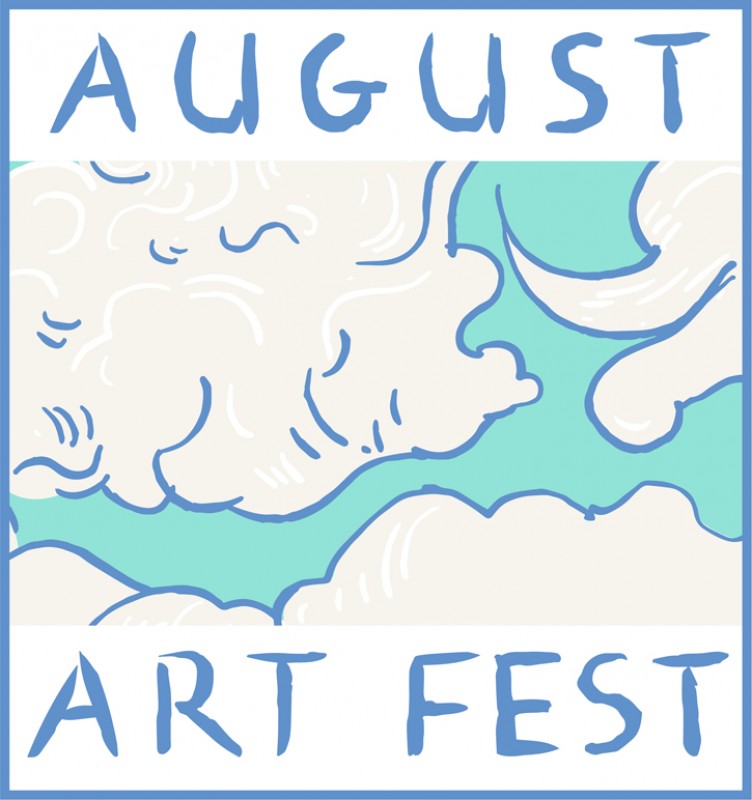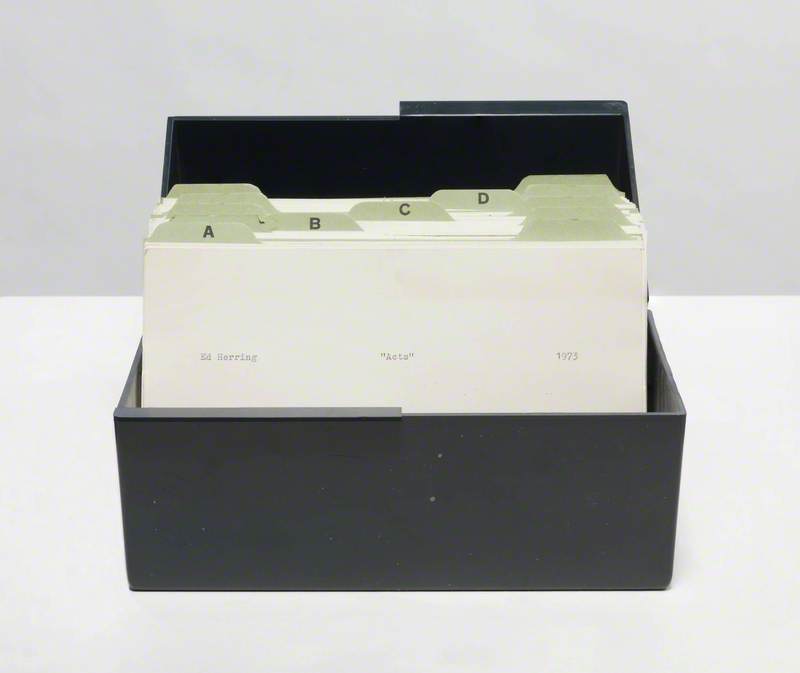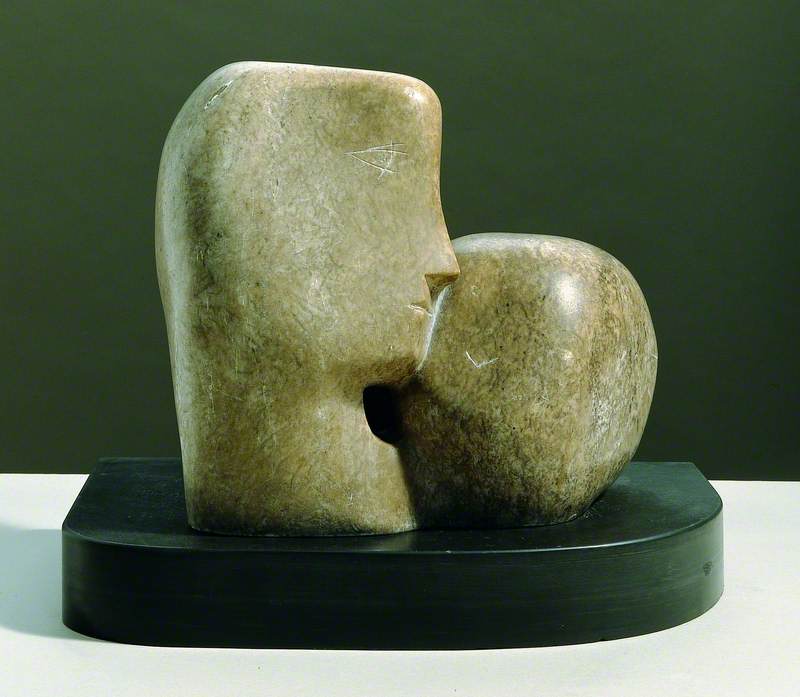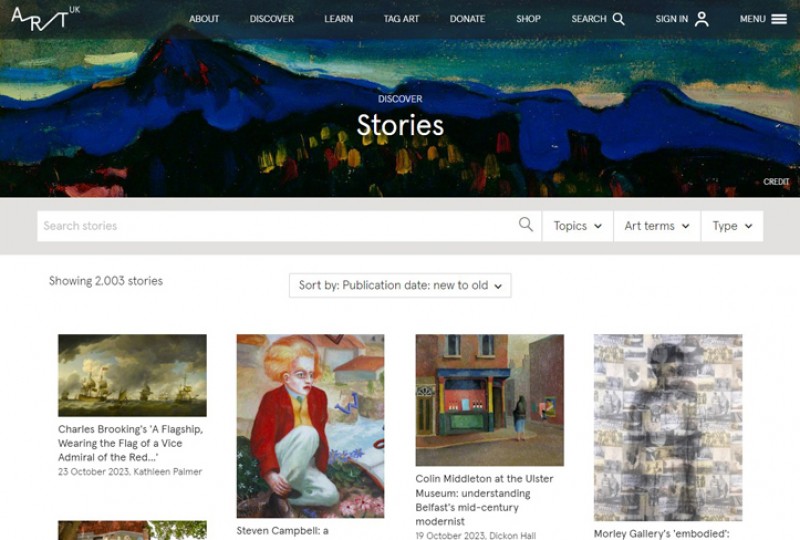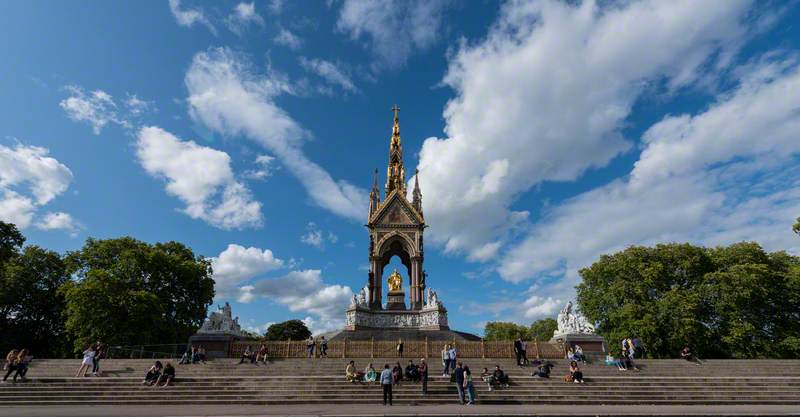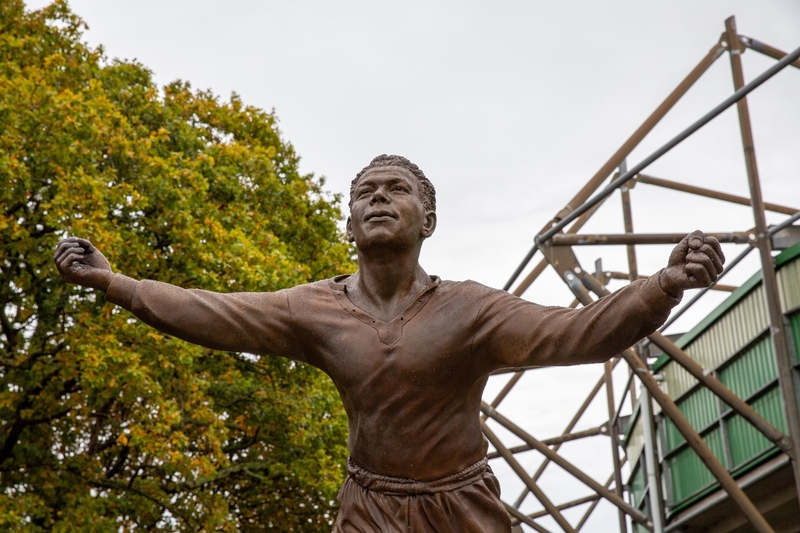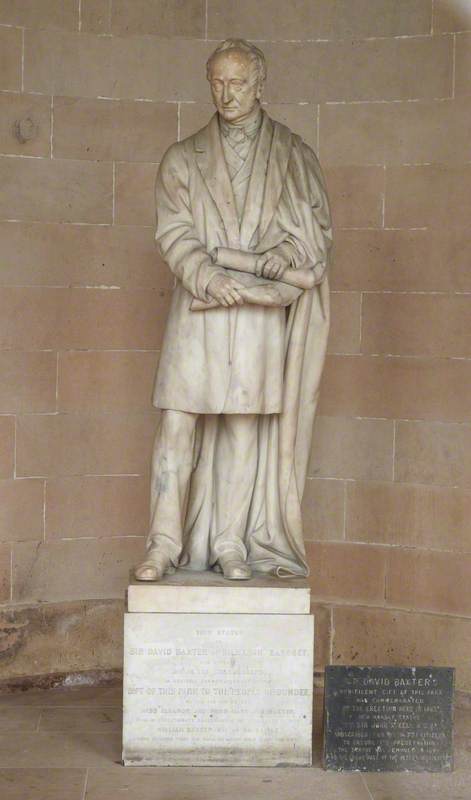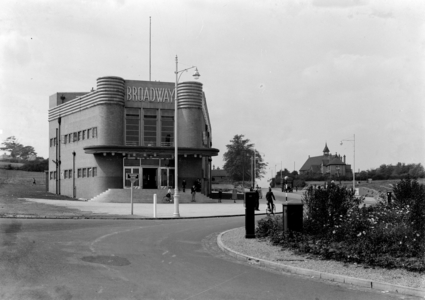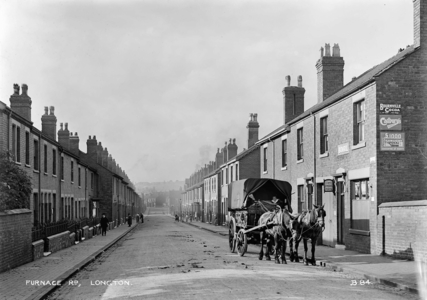Can Art UK's Tagger be used to bring people closer to the art around them and better understand and appreciate their local area? We have started exploring this question through our community volunteering programme, supported by The National Lottery Heritage Fund, which is taking Tagger into communities in Stoke-on-Trent.
Tagger is a crowdsourcing tool that allows people to 'tag' artworks with descriptive words. Taggers contribute to making Art UK more searchable – and discover new art and artists along the way.
Tagging an artwork
The first group we worked with as part of our community volunteering programme was the ST6 photography group, who meet weekly at The Hub@ST6 in Stoke-on-Trent. The group offers a supportive space to explore photography together, with members often venturing out on photo walks and holding exhibitions to showcase their work to the wider community. The group worked with Art UK on a four-week Tagger project in the summer of 2024, which saw them tag local artworks and make photographs in response.
The Potter's Wheel, B.39
(title as written on negative or envelope) c.1910
William Blake (1874–1957) 
Not long before the project started, 71 photographs taken in and around Stoke-on-Trent by local photographer William Blake (1874–1957) were added to Art UK, as part of The Potteries Museum & Art Gallery's collection. Blake's images document social conditions, working life, leisure activities and the landscapes frequented by the people of The Potteries during the first half of the twentieth century. There is an ongoing interest in local landscapes amongst group members and none of the Blake photographs had been tagged by anyone, so this seemed like a perfect place to start.
The project began with an introduction to Tagger for the group members and an explanation of Tagger's role in making publicly owned art in the UK more accessible and discoverable. To get a feel for the process of tagging, looking carefully at artworks and adding keywords based on what can be identified within the image, we began with paper and Post-it stickers. The group worked in pairs to add Post-it tags of all the things they could see in their image.
Adding Post-it stickers with tags to photographs from the William Blake collection
Once the group members had the feel for tagging using physical photographs, I demonstrated how Tagger works on the Art UK website, and we set to work adding tags to as many William Blake photographs as we could.
Looking closely at these photographs naturally gave rise to sharing memories or little-known facts about the city the group know so well. Through tagging, we were also able to begin the detective work of piecing together possible stories behind images using the visual clues available to us.
At first glance, the below photograph looked similar to Blake's other images, documenting working life in Stoke's well-known industries. Upon closer inspection of the clothing worn by those traversing this treacherous landscape, it became clear that this was a job they were ill-equipped for. We spotted an elderly lady wearing a skirt and jacket, teetering perilously close to the edge of a steep drop. We were curious about the ages of some of the boys also walking along the exposed coal seam, the multitude of tools they were using to collect coal, and the dog standing atop the hill, peering at the scene unfolding below.
We paired this visual information with the text available to us: the artwork title and the sentence written directly onto the print that reads 'Coal Strike, Mar 1912. Labour works a seam on its own behalf'. We ascertained that this was a period of coal scarcity, due to ongoing strike action from local miners. The people scattered about the hill were gathering coal for themselves and their families on an open seam above Longton marl hole, at a time when coal would have been increasingly difficult and expensive to get hold of through official channels. Daily life relied on coal so it was clear why those in the photograph were willing to take such risks.
After adding tags to artworks and gaining an insight into local landscapes of the past, the next stage of the project was to recreate some of Blake's images in the present day. Several group members took the lead on selecting images they thought we had a good chance of replicating, all these years later. That meant that interior shots were out, and outdoor landscapes were in!
Lots of Blake's landscapes available on Art UK were taken in Longton, the most southerly of the six towns of Stoke-on-Trent, so we decided to start there. A plan was made, locations were researched and a route was devised. We met in Longton the following week for a photo walk. We split off in different directions to cover as much ground as possible in the two hours we had together.
I ventured out with Ali, Gwen, Keith, Amina and Ruby, in search of the site of the old Station Hotel.
Station Hotel, Uttoxeter Rd, Longton
(title as written on negative or envelope) c.1910
William Blake (1874–1957) 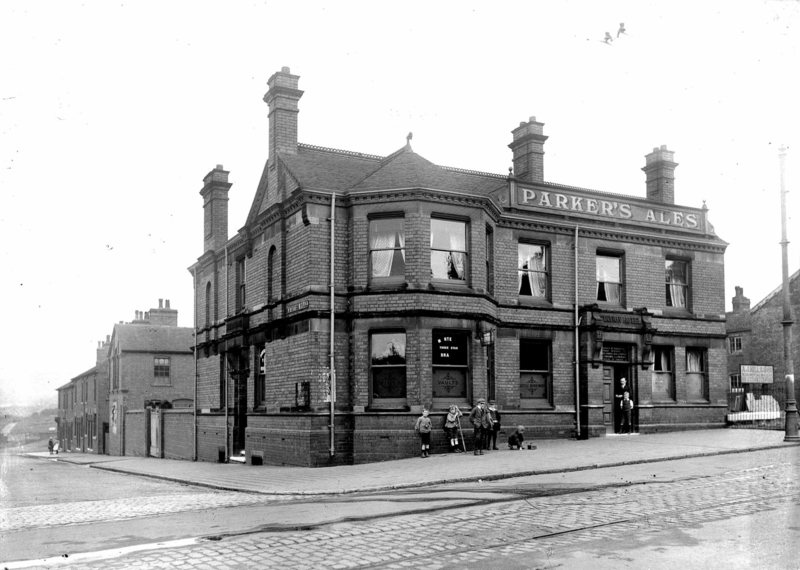
In its place, we found a bridge going over the A50, a major road in England running between Warrington and Leicester, that crosses the southern half of Stoke-on-Trent. The landscape we found looked very different to Blake's photograph and initially caused us to question if we were in the right spot. Thanks to some robust detective work by ex-local and group member Ali, we were assured that our location was correct.
The former location of the Station Hotel, Longton, in 2024
However, it wasn't until we noticed a row of terraced houses with distinctive chimneys in the far left of Blake's image, which are still there today, that we could be sure of the angle to take our photographs.
A closer view of terraced houses near the former location of the Station Hotel, Longton, in 2024
The next stop on our photo walk was Upper Normacot Road, a residential street of terraced houses. Eagle-eyed group member Ali spotted a distinctive gatepost in Blake's original photograph that remains there today.
Upper Normacot Rd, Longton. B111
(title as written on negative or envelope) c.1915
William Blake (1874–1957) 
Matching Blake's photograph of Upper Normacot Road with the current street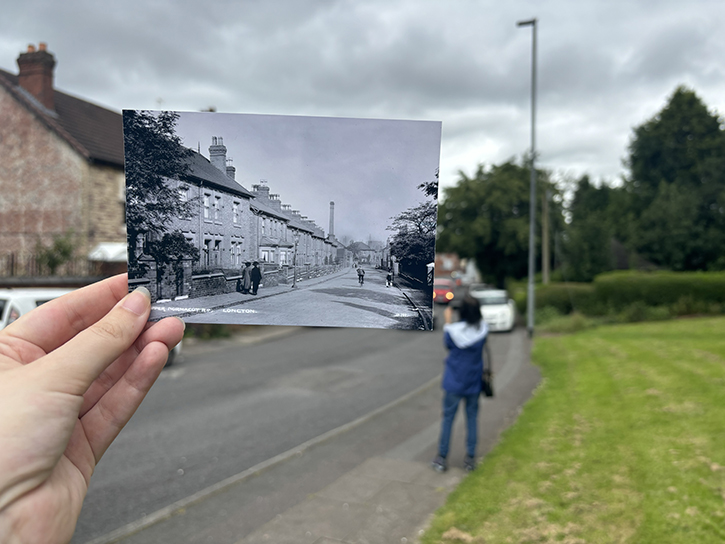
At the same time we were hunting down our locations, Phil was venturing into the opposite end of town in search of the old Broadway Cinema, which closed on 19th June 1971. Due to some excellent online research on his part, he had a good idea that there was now a KFC on the site but wanted to be sure. On his journey there, he popped into a café and asked a resident if they remembered the cinema, and if it was now a popular poultry-themed food chain. The gentleman assured Phil that he had lived in Longton all his life, and he was indeed correct in his assumptions.
You can also see Holy Trinity Church, Meir, in the background of Blake's photograph, which can also be seen in Phil's 2024 photograph. Today, the church is next to a busy slip road for the A50 dual carriageway.
Meir and Sandon, Broadway Cinema
(title as written on negative or envelope) c.1940
William Blake (1874–1957) 
The former location of the Broadway Cinema, Longton, in 2024
Viewing the photographs side by side, Phil noticed that the road had been widened and the position of the roundabout had moved slightly, but the current landscape was still recognisable when compared with Blake's original image.
Andy went to Daisy Bank Marl Hole, now an industrial estate and almost unrecognisable from Blake's earlier photograph.
'Edensor' Marl Hole, Longton
(title as written on negative or envelope) c.1910
William Blake (1874–1957) 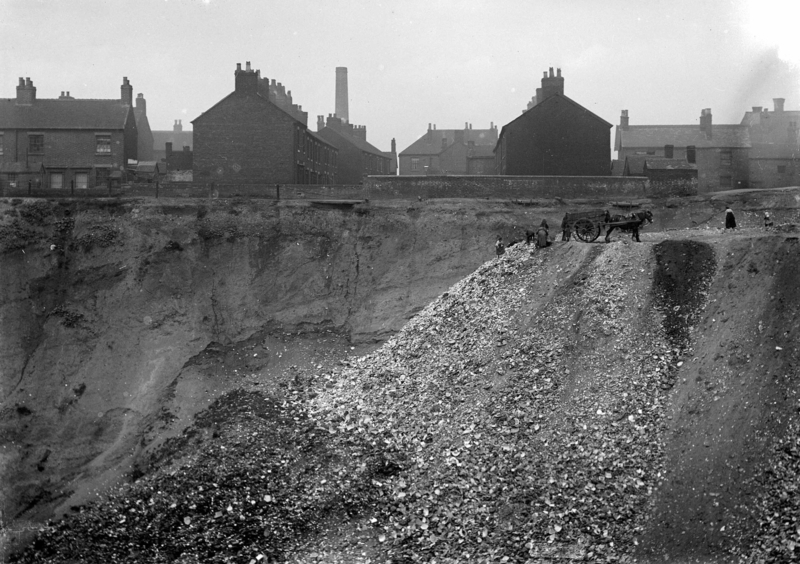
Although Andy used online resources to find an approximate location, the marl hole was so big that several streets bordered its edges. The above photograph appears to have been taken from the eastern bank, looking west – the houses are those situated on Paradise Street, Orchard Place and Edensor Road. The tall chimney probably belongs to the Longton Hall Brick Works or Longton Hall Colliery, situated further to the west. Despite knowing this, it was difficult to reconcile Blake's view with the present day as the landscape had changed so much.
Fortuitously, we spotted another, very similar photograph of the marl hole on Art UK.
Marlhole and Potworks, c.1912
(title as written on negative or envelope) c.1912
William Blake (1874–1957) 
Our research concluded that this photograph was taken from the western bank of the marl hole, looking east, and provided a vital view of the tower of St James' Church, which can be seen in the background towards the left-hand side. Without this key finding, we'd have relied heavily on guesswork when deciding on our vantage point.
The site of the former marl hole, in 2024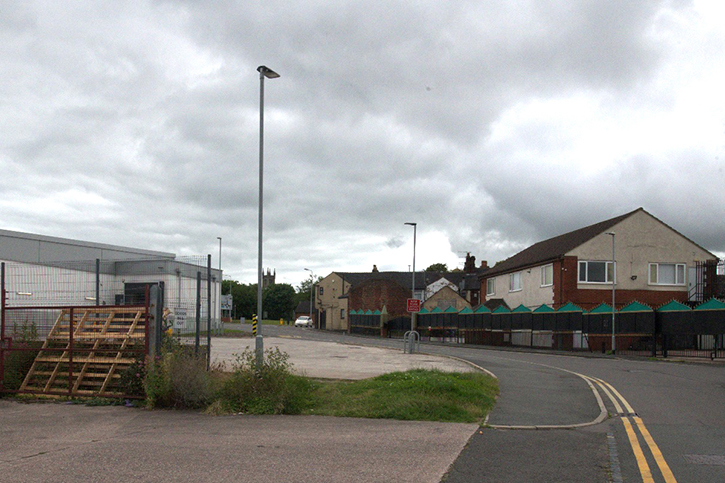
Between them, the group managed to recreate seven of Blake's photographs, with some group members travelling back a second time to photograph locations we couldn't get to on our initial photo walk.
Several images show us how the pottery industry in the city has declined and that, sadly, we have lost most of the bottle ovens which used to be a feature of the townscape.
Tamms Pottery, c.1935
(title as written on negative or envelope) c.1935
William Blake (1874–1957) 
The site of the former Tamms Pottery, Longton, in 2024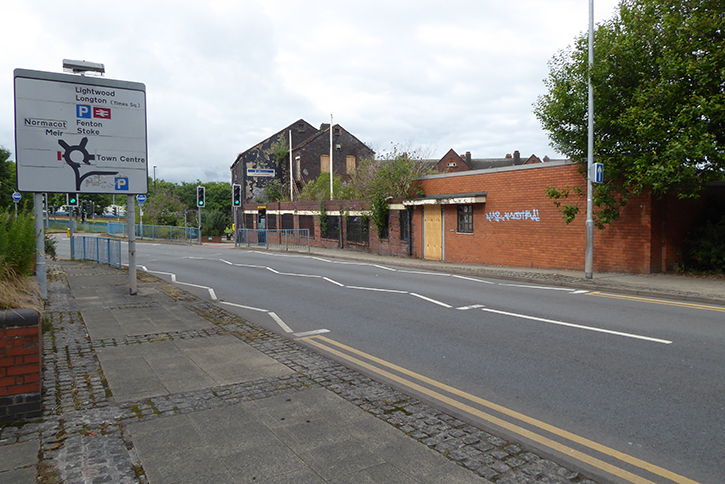
Although many of Blake's photographs show industrial life, he also documented several of the city's parks.
Longton Park Winter Time
(title as written on negative or envelope) c.1906
William Blake (1874–1957) 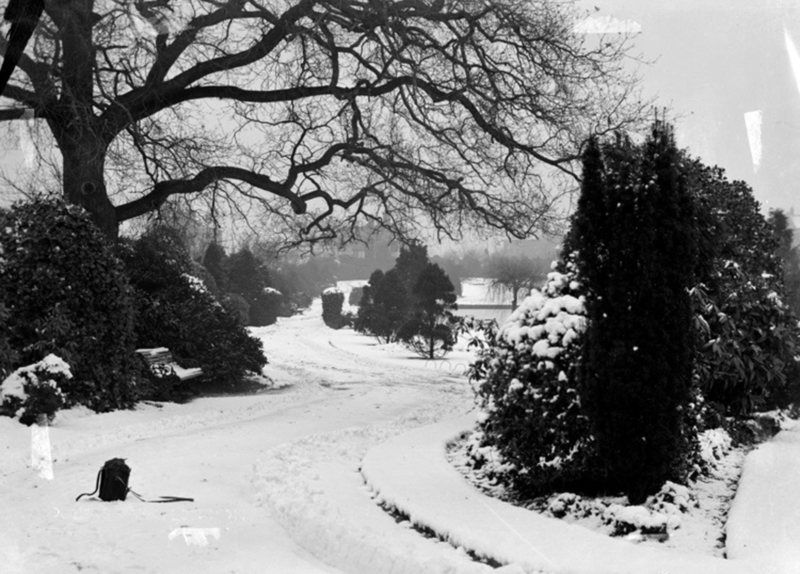
Longton Park, in 2024
Some residential areas of Longton have not changed very much in over a century, apart from the modes of transport on the streets.
Furnace Road, Longton, c.1910
(title as written on negative or envelope) c.1910
William Blake (1874–1957) 
Furnace Road, Longton, in 2024
In response to Blake's documentation of industrial life in Longton, group members Ruby, Gwen and Amina photographed nature reclaiming some of those spaces over time.
A white flower climbing a metal fence
A tree on a grass verge with Longton skyline in the background
Using Tagger has allowed us to look closely at artworks to identify details within the images. It is precisely this act of careful looking that enabled us to find enough clues within the landscape to recreate William Blake's photographs in the present.
It also allowed the group and I to spend time together, looking at and creating art. When asked how they found the project, group members gave the following feedback:
'The project gave me a sense of purpose and highlighted my sense of observation.'
'Taking part improved my skills and gave me a lot of confidence in new areas of art.'
'I'm disabled and in a wheelchair full-time, this project got me out and working my brain.'
In the coming months, we are running more community tagging projects in Stoke-on-Trent and exploring ways for Taggers worldwide to engage more with Art UK.
Thanks to ST6 photography group for their time and dedication on this project. If you too would like to harness the skill of looking by tagging artworks, you can sign up and try Tagger today.
Natalie Willatt, Art UK's Community Volunteer Manager

